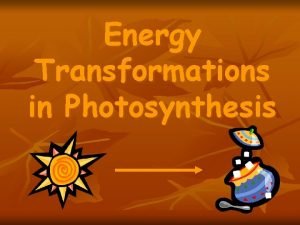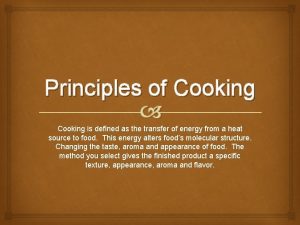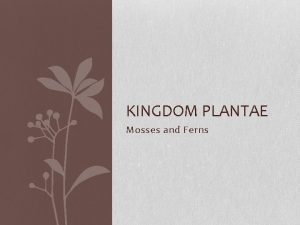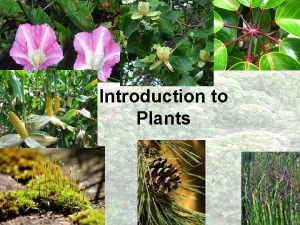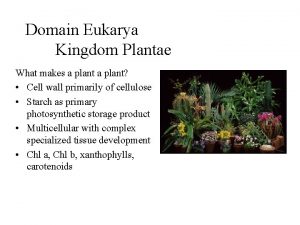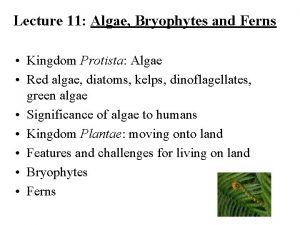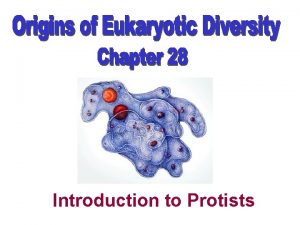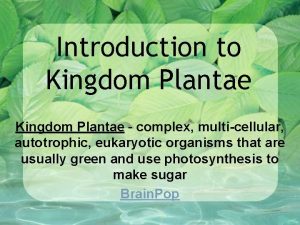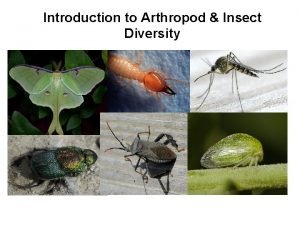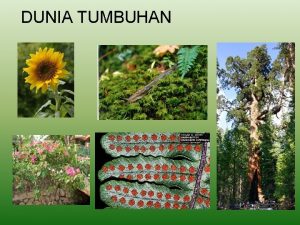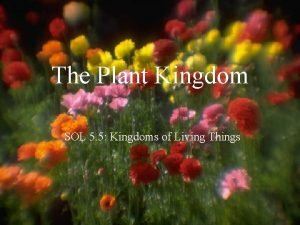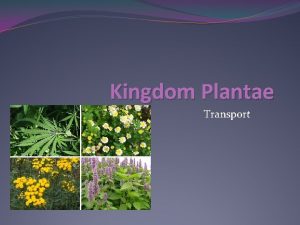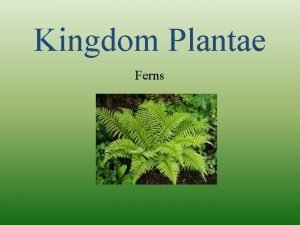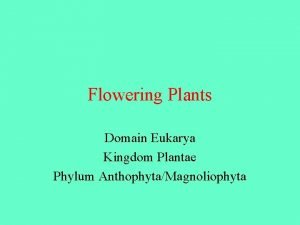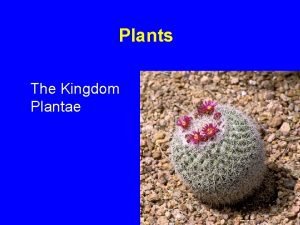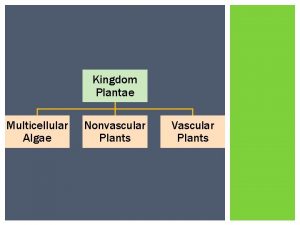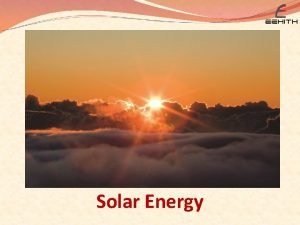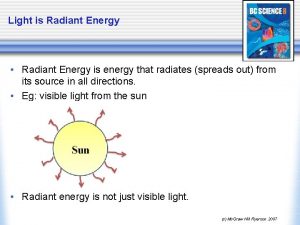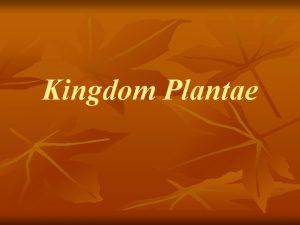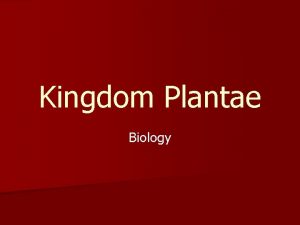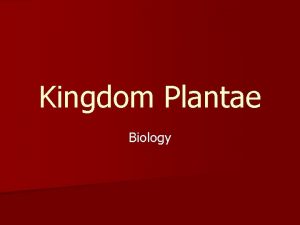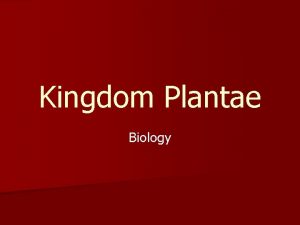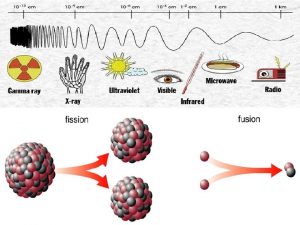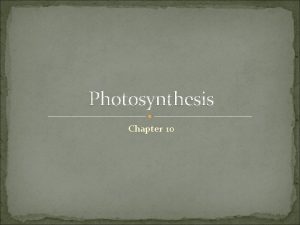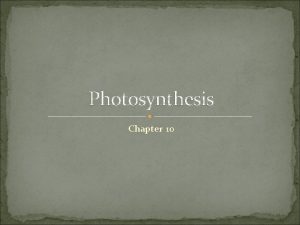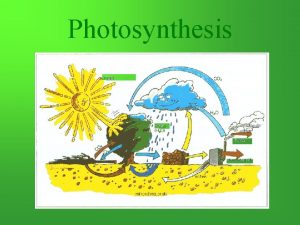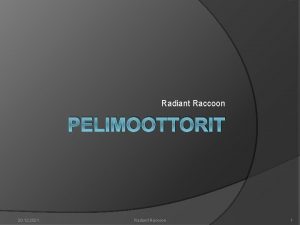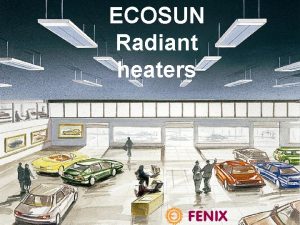Kingdom Plantae radiant energy Photosynthesis Review Photosynthesis uses






































- Slides: 38

Kingdom Plantae




radiant energy Photosynthesis Review • Photosynthesis uses radiant energy from the sun to fix carbon dioxide into GLUCOSE (sugar). CO 2 Photosynthesis glucose CO 2 O 2 • The captured radiant energy is stored within the bonds of the carbohydrate as chemical energy

One More Time

The Chemical Formula of Photosynthesis

Photosynthesis Evolved Under Water! CO 2 CO 2

Plants Biggest Challenges on Land • Water Loss

Plants Biggest Challenges on Land • Gas Exchange – CO 2 in / O 2 out – Must simultaneously minimize water loss

Solutions! - Waxy Cuticle - Roots - Stomata

Moss Leaf Cross Section

Vascular Plant Cross Section

Why Are Plants Important? Photosynthesis is the most important natural sink for CO 2 on Earth. This is critically important as part of the carbon cycle and can mitigate climate change. Plants cause ground water to evapourate from their leaves. This is called transpiration. It is an important part of the water cycle and contributes to the climate. Photosynthesis produces all of the oxygen gas on Earth Photosynthetic autotrophs, are at the base of every food chain on Earth. They produce the carbohydrates that all heterotrophs depend on for energy

Why Are Plants Important? Plants provide habitat for countless species Plants create microclimates and contribute to macroclimate Roots hold the soil in place, prevent erosion, minimize nutrient runoff and are critically important for the creation of new soil via decomposition.

Characteristics of Plants • All plants: – are multicellular eukaryotes – have cells with a cell wall and chloroplasts – are sessile – display an alternation of generations life cycle

Non-vascular Non-seed plants Vascular Seed plants Vascular Flowering Seed plants

Bryophytes





Key Terms • Antheridium – sperm producing structure • Archegonia – Egg producing structure which becomes the site of growth for the sporophyte • Sporangium – Site of meiosis in the sporophyte that produces haploid spores. • Rhizoid – Single celled root-like projections from the gametophyte


The Seed Plants: Gymnosperms and Angiosperms

Gymnosperms Pollen grains contain microscopic male gametophytes that produce sperm Pine cones contain structures called ovules. Each ovule holds a tiny female gametophyte.

Gymnosperms When an ovule is pollinated, it develops into a seed.

Pollination

The Seed

Gymnosperms are wind pollinated

Gymnosperms


Angiosperms

Parts Of The Flower


Some Angiosperms are wind pollinated, but most recruit pollinators


 Radiant energy photosynthesis
Radiant energy photosynthesis Cool protists
Cool protists Kingdom plantae characteristics
Kingdom plantae characteristics Kingdom of protist
Kingdom of protist Gravitational potential energy
Gravitational potential energy Old kingdom middle kingdom new kingdom
Old kingdom middle kingdom new kingdom Old kingdom middle kingdom new kingdom
Old kingdom middle kingdom new kingdom Youtube egypt
Youtube egypt Mentohotep
Mentohotep Poeleing
Poeleing Biology organism classification
Biology organism classification Characteristic of kingdom plantae
Characteristic of kingdom plantae Kingdom plantae characteristics
Kingdom plantae characteristics Lycodiophyta
Lycodiophyta Plantae
Plantae Monera, protista, fungi, plantae animalia
Monera, protista, fungi, plantae animalia Plantae characteristics
Plantae characteristics Protista characteristics chart
Protista characteristics chart Protista prokaryotic
Protista prokaryotic Green algae structure
Green algae structure Cladogram of kingdoms
Cladogram of kingdoms Subkingdom of kingdom plantae
Subkingdom of kingdom plantae Kingdom plantae
Kingdom plantae Plant - multicellular eukaryote of the kingdom plantae
Plant - multicellular eukaryote of the kingdom plantae Kingdom plantae chart
Kingdom plantae chart Anggota kingdom
Anggota kingdom Diagram of kingdom plantae
Diagram of kingdom plantae Characteristics of all plants
Characteristics of all plants How do plantae get nutrients
How do plantae get nutrients Fern plant kingdom
Fern plant kingdom Plantae phylum
Plantae phylum Plantae common characteristics
Plantae common characteristics Archaebacteria protista fungi plantae animalia
Archaebacteria protista fungi plantae animalia Is algae non vascular
Is algae non vascular Introduction of kingdom plantae
Introduction of kingdom plantae What is radiant light
What is radiant light Radiant energy
Radiant energy Radiant vs light energy
Radiant vs light energy Advantages of solar
Advantages of solar
